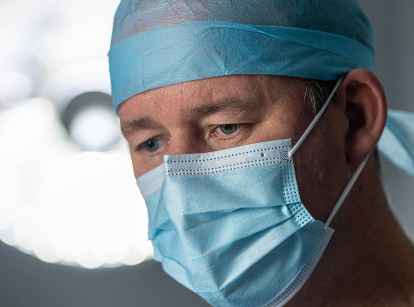Introduction
Prolapse of the vagina and uterus is a relatively common problem, especially affecting women after they go through the menopause and their periods have stopped. The reason for this is that the ovaries stop working after the periods cease, and as a result the ovaries stop producing a hormone called oestrogen, which keeps the vaginal and uterine tissues strong.
This allows any damage to the pelvic floor structures which may have been sustained with childbirth, or indeed just the process of getting older to become more pronounced, leading to prolapse.
Prolapse is generally perceived as a vaginal lump which can be quite large and come right out of the vagina, especially after a period of standing or exercising, when sitting on the toilet or coughing or laughing. There will often be dragging discomfort and occasional discharge or bleeding.
Prolapse can generally be grouped into 4 types:
Prolapse of the uterus
This is when the supports holding the uterus up start to sag and become weak. This causes the uterus to fall downwards into the vagina, and occasionally right out of the vagina.
Prolapse of the front wall of the vagina
This is also called a cystocoele and occurs when the support underneath the bladder and the front wall of the vagina become weak and allow the bladder to sag downwards, causing a lump in the front, or anterior wall of the vagina.
Prolapse of the back wall of the vagina
This is also called a rectocoele and occurs when the support under the back wall of the vagina over the rectum and bowel becomes weak, allowing the bowel to protrude forwards and cause a lump in the back wall of the vagina.
Prolapse of the roof of the vagina
This is also referred to as vault prolapse, and occurs when the support to the roof of the vagina begins to weaken, allowing the top roof of the vagina, or vault, to fall downwards, a bit like turning a sock inside out from the toes down. This type of prolapse is more common if a hysterectomy has been performed in the past.
Surgical Treatment
Surgery to correct a prolapse depends on what the problem is. Surgery is performed under a general anaesthetic, and will involve a 2-3 day stay in hospital to recover.
For a uterine prolapse, a hysterectomy is performed through the vagina to remove the uterus and thus correct this prolapse.
A front vaginal wall prolapse (cystocele) is corrected by making an incision along the front wall of the vagina, dissecting back the bladder tissue and its supports, and placing some buttressing support stitches underneath the bladder to support it.
The same principle applies for a back vaginal wall repair (rectocele repair), when an incision is made along the back wall, the rectum dissected away and supporting stitches placed to repair the defect and give the vaginal wall better support.
A vault prolapse is corrected by placing a permanent stitch between the roof of the vagina and a ligament in the pelvis called the sacrospinous ligament. This hitches up the vaginal vault correcting this type of prolapse.
All prolapse surgery by Dr Friebe is performed vaginally.
Risks
Particular risks and complications for prolapse surgery include:
- Heavy bleeding – this can occur during the surgery or after the surgery and rarely the patient may need a blood transfusion due to the blood loss, or a second operation may be required to localise the bleeding point and repair it.
- Infection – which can occur within the vagina, in the pelvis if a hysterectomy has been performed, or a urinary infection in the bladder can occur. Antibiotics may be required to treat this.
- Damage to bowel or bladder – prolapse surgery requires operating very closely to these organs, and very rarely they can be damaged during the surgery. Any damage seen is repaired, but it can mean longer in hospital to recover from the surgery or a longer and a more complex recovery period after the operation.
- Bladder dysfunction – occasionally the bladder can be slow to function after prolapse surgery causing it to not empty properly. This will resolve with time, but may require reinsertion of a urinary catheter after it is removed after surgery, or occasionally a patient may have to go home with a catheter for a week to allow the bladder to rest and then return to hospital for removal of the catheter and rechecking that it is emptying properly.
- Recurrence of prolapse – about 5% of people will get a recurrence of prolapse despite a good operation and an uncomplicated recovery phase. Often referral to a urogynaecologist, who is a gynaecologist with a special interest in complicated prolapse and incontinence surgery will be required. This is in the interests of achieving the best possible result, should a second prolapse operation be required.
